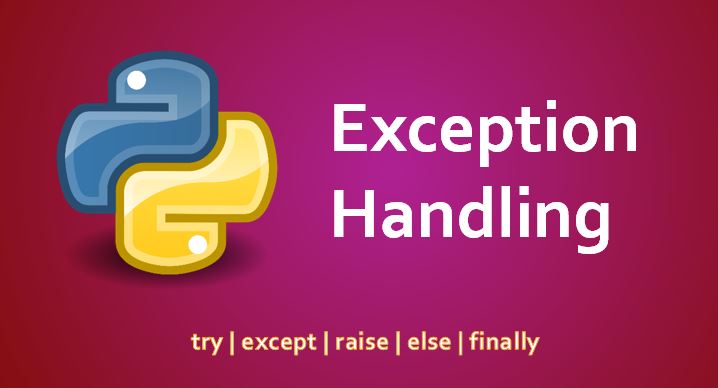Tips For Handling Multiple Exceptions in Python from aletaiechhryret's blog

There are many types of errors that can occur while programming in Python. These errors can be grouped and handled using the exception handling system. Some examples of these errors include ZeroDivisionError, NameError and TypeError.
The try-except block allows a program to respond to different exceptions without terminating the program. There are several ways to handle multiple exceptions in Python, including using separate except blocks.
Using a tuple
Python exception handling allows programmers to handle errors that cannot be handled by the program itself. For example, if a program divides a number and gets non-integral input, it will raise an exception that can be caught by using an except block. This allows the program to continue running without crashing.
A tuple can be used to catch multiple exceptions in one except block. The tuple can contain the names of each exception and its type. The python catch multiple exceptions interpreter checks each exception in a group from left to right. This approach is more effective than catching each exception separately because it prevents the program from attempting to catch more than necessary.
This method is particularly useful if your code takes user input. You can use a tuple to catch different types of exceptions such as ZeroDivisionError, TypeError, and IndexOutOfRange. The interpreter will then execute the except block if it matches the error that is raised.
Using separate except blocks
If you want to catch multiple exceptions in Python, you can use separate except blocks. These blocks execute when an exception is thrown, and they can be used to handle a variety of errors. For example, you can use an except block to handle a FileNotFoundError.
Similarly, you can write an except block to handle a KeyError. This exception is raised when you try to access a dictionary key that does not exist. In this case, you can use the except block to print a message telling the user that they are trying to access an invalid index. You can also use an except block to handle a TypeError. This is useful for handling iterables, and you can use it to handle an IndexError that occurs when you try to access a list item at a non-valid index. However, you should put a parentheses around the except keyword to avoid syntax errors. If you don’t put a parentheses around an except block, the interpreter will raise a syntax error.
Using the base Exception class
An exception is a Python object that represents an error condition. It can be raised by the interpreter or by user code. The program can then respond to the exception in several ways. For example, it can log the exception or terminate and quit. This allows developers to debug their programs. In addition, they can use the try... except block to protect code that might raise an exception from being executed.
Python allows developers to create their own exception classes by extending the base Exception class. Those classes can then inherit built-in exceptions. Exceptions may also have associated values, known as arguments. These values can be a string or a tuple of items.
Using the base Exception class can make it difficult to catch different types of exceptions. Therefore, it is recommended to use the except block syntax instead of the bare except statement. This will prevent you from accidentally catching exceptions that are not related to the code in your try block.
Using the else keyword
The else keyword is used in conditional statements (if) and in try...except blocks to decide what to do if an exception is not caught. When the Python interpreter encounters an exception, it looks for an except block to determine if the exception can be handled. The except block must be named with the type of exception, such as NameError or ZeroDivisionError, and should include a statement that will catch the exception. The rest of the line will provide more detail about the exception, including its class and the cause.
A bare except clause will catch all exceptions, but it is better to use except* instead, which lets you select a specific type of exception for handling. This allows you to handle multiple exceptions in a single except block without having to create duplicate code or long, meandering code passages. You can also add a finally block to your program to perform actions that must be completed, such as closing a file or disconnecting from the network.

The Wall